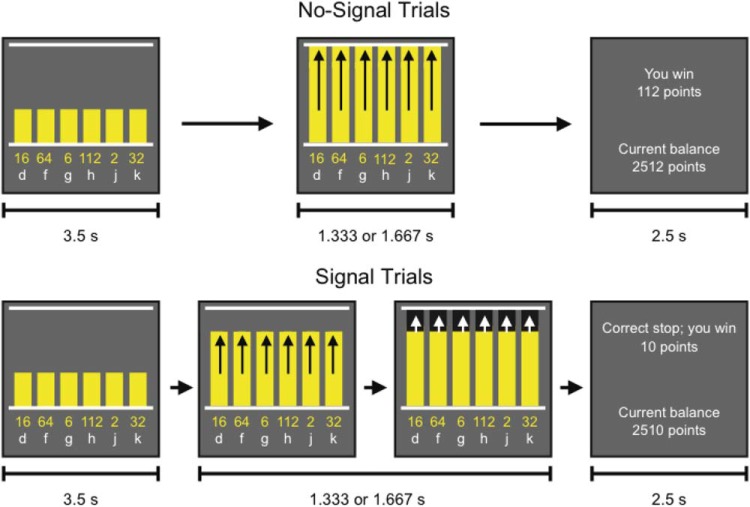Figure 1.
Examples of the two trial types in the bar task. The top panel shows the sequence of events on trials without signals. The bottom panel shows the sequence of events on a signal trial. The trial started with six potential bets. Underneath the betting options, letters were displayed that referred to the response keys on the keyboard. After 3,500 ms, the bars started rising until they reached the top white line after either 1.333 s or 1.667 s. On no-signal trials, subjects were required to choose one of the bets by pressing the corresponding letter when the bars reached the top white line. The response was recorded as correct when it was made between 250 ms before reaching the line and 250 ms after reaching the line. If the subjects won, they would get the points they bet; if they lost, they would lose half of the betted points. On signal trials, the bars turned black before reaching the line. If subjects saw the signal, then depending on the group they were in, they either made a double-response or attempted to withhold their response. On signal trials, subjects received or lost a fixed amount, depending on whether they responded correctly to the signal or correctly withheld their response. At the end of the trial, feedback was presented that showed the subjects how much they had won or lost and their current balance. On signal trials, subjects were told whether they responded correctly or correctly withheld their response, how much they gained or lost, and their current balance. See the online article for the color version of this figure.

